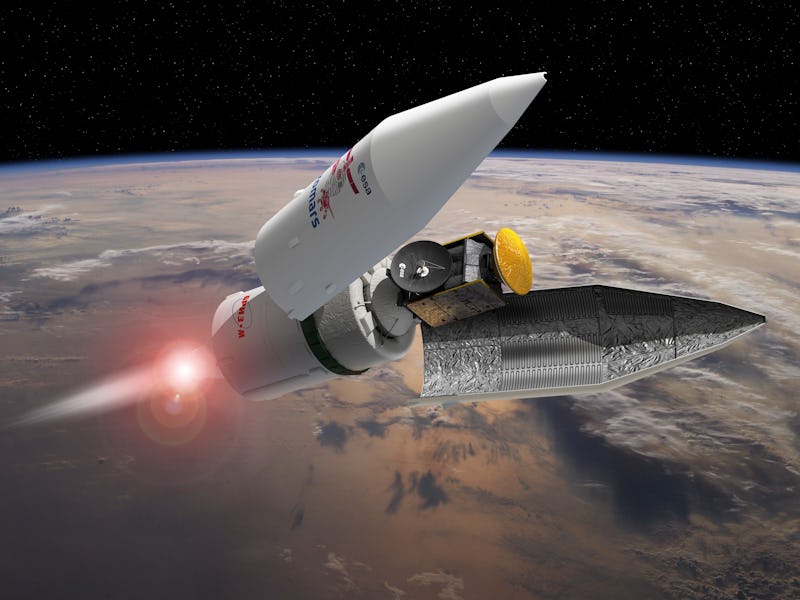The European Space Agency (ESA) does not know what happened to the Schiaparelli lander it sent to Mars, the organization announced in a press conference Thursday. The agency stressed that the lander, along with the Trace Gas Orbiter, that together make up the 2016 ExoMars project, has sent back a compendium of data that may explain what happened and help future endeavors.
The lander was left in an uncertain fate when it made its six-minute descent on Wednesday night. Data from the Giant Metrewave Radio Telescope in India showed the lander deployed its parachute and heat shield, but there is a window of around 50 seconds between when the lander stopped communicating and when it is expected to have landed.
It is not clear, at this stage, whether Schiaparelli made it in one piece. Over the next few weeks, the ESA aims to piece together the data to find out what happened. Current evidence points to an issue where the parachute deployed too early: It was meant to deploy from 4,000 feet in the air, before the thrusters helped it slow down further. The ESA also believes the thrusters may have stopped working after briefly firing.
“I have personally no doubts we will be able to fully understand what has happened during this descent, and reconstruct where Schiaparelli is,” said Andrea Accomazzo, ESA spacecraft operations manager. The ESA will also be using data from Mars Express, an older orbiter that Schiaparelli sent information to.
The mission is a critical moment for the ESA, which is currently seeking €200 million (~$220 million) from the 22 member states to fund the mission in 2020. Thursday’s successful data collection will be used to help make the case that the mission is worth pursuing.
“Mars exploration is hard, and that’s one of the reasons why we do it,” said David Parker, Director of Human Spaceflight and Robotic Exploration.
The press conference was attended by ESA director general Jan Woerner, director of human spaceflight David Parker, director of operations Rolf Densing, spacecraft operations manager Andrea Accomazzo, and ExoMars program manager Don McCoy.
ExoMars is a two-part mission, with the two components sent this year laying the foundations for a 2020 mission. The Schiaparelli lander is aimed at studying the environment and learning more about surface winds. The Trace Gas Orbiter will orbit the planet and collect data about methane, in a bid to understand where these gases came from, and whether they point to life.
“The mystery of the methane is what lies ahead,” Parker said.
The orbiter will act as a base station to transmit data to a future rover mission. Originally scheduled for 2018, the agency pushed the launch back to 2020 to allow more preparation time. Thursday’s news suggests the extra time may prove valuable.
